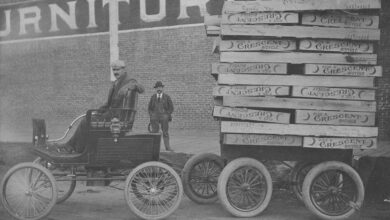Planes, trains and automobiles: Choosing the best way to travel | Opinion

The Christmas holidays are growing closer, meaning many of us have begun to make plans to travel home to our families and friends. This means many of us will grapple with the pros and cons of the various transportation options available to us.
Distance, speed and comfort will always play a role, and in this way, most students at Gonzaga University must make a choice of whether to drive, ride or fly home for the holidays.
Probably the most common option that students choose to take, at least among those that live semi-close to home, is driving. Driving gives you total control over the route you take and the arrival or departure time. It is also often much cheaper than flying, since the only expense is usually gas. It is much easier to drive than to go through the whole rigmarole of parking, security and ticketing at the airport.
However, there are quite a few drawbacks with driving, mostly in terms of speed and safety. Spokane sits in the middle of nowhere; the next comparable cities in terms of size — Seattle and Boise — are between four and six hours away by car.
It is likely that someone who prefers to drive would lose the equivalent of their break in travel days. In addition, driving requires you to be constantly alert, and the winter road conditions are often treacherous and nerve-wracking.
If driving is neither possible nor practical, the other option that is available for students is flying. Flying is usually the fastest and safest option. As an example, flights from Spokane to Seattle usually last under an hour. The time saved from flying can be very valuable on short trips, and the likelihood of something going wrong is usually low. I personally fly over Thanksgiving to avoid snow at the pass and to get as much out of the short break as possible.
The biggest drawbacks to flying are definitely cost and comfort. For me, the seats are too small for my broad shoulders, and bags and beverage carts consistently bang my knee as they go up and down the aisle.
Flights from Spokane can also get expensive, especially over the holidays when demand spikes. Students from Eastern Washington University, Whitworth University and GU all crowd the airport on the way home, and flight costs can sometimes balloon to be on par with traditional transcontinental flights.
In my opinion, however, the best option for long-distance travel is unfortunately impractical for us at GU: that being train travel. As someone who used to live on the East Coast, the train is the perfect marriage of the best parts of both plane and car travel.
On a train, the benefits of driving — like cell service, edible meals and comfortable seating — are all still present. However, the nature of train travel means that speeds between destinations approach that of a flight, and you also don’t need to pay total attention to travel like you do when driving. While it still can be relatively expensive, train travel is definitely worth the added expense.
When traveling long distances, it is important to understand the factors that need to be considered. For short trips, the speed and safety of flying might be the better option, while longer trips might necessitate driving instead.
However, regardless of your choice, I would highly encourage everyone to consider riding the rails some time. You might just find a true love for train transportation.
Jackson Hudgins is a staff writer. Follow him on X: @judge_hudge63.



